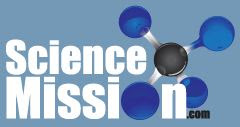By using artificial human skin, a research group has managed to block invasive growth in a skin cancer model.
The study has been published in Science Signaling and looks at what actually happens when a cell turns into a cancer cell.
“We have been studying one of the cells’ signalling pathways, the
so-called TGF beta pathway. This pathway plays a critical role in the
cell’s communication with its surroundings, and it controls e.g. cell
growth and cell division. If these mechanisms are damaged, the cell may
turn into a cancer cell and invade the surrounding tissue,” explains the
senior author.
Under normal circumstances, your skin cells will not just start to
invade the hypodermis and wreak havoc. Instead, they will produce a new
layer of skin. But when cancer cells emerge, the cells no longer respect
the boundaries between skin layers, and they start to invade each
other. This is called invasive growth.
“We already have various drugs that can block these signalling pathways
and which may be used in tests. We have used some of them in this
study,” explains a co-author of the study.
The artificial skin used by the researchers in the new study consists of
artificial, genetically manipulated human skin cells. Skin cells are
produced on subcutaneous tissue made of collagen. This makes the cells
grow in layers, just like real human skin.
Unlike mice models, the skin model, which is another word for artificial
skin, allows researchers to introduce artificial genetic changes
relatively quickly, which provide insight into the systems that support
skin development and renewal.
This way they are also able to reproduce and follow the development of other skin disorders, not just skin cancer.
“By using artificial human skin we are past the potentially problematic
obstacle of whether results from tests on mice models can be transferred
to human tissue. Previously, we used mice models in most studies of
this kind. Instead, we can now conclude that these substances probably
are not harmful and could work in practice, because the artificial skin
means that we are closer to human reality,” says the senior author.
The loss of TGF-β1 or SMAD4 promoted cell cycling and delayed epidermal
differentiation. The loss of TGF-βRII, which abrogates both
SMAD4-dependent and SMAD4-independent downstream signaling, more
strongly affected cell proliferation and differentiation than did loss
of SMAD4, and it induced invasive growth.
TGF-βRII knockout reduced cell-matrix interactions, and the production
of matrix proteins increased the production of cancer-associated
cell-cell adhesion proteins and proinflammatory mediators and increased
mitogen-activated protein kinase (MAPK) signaling. Inhibiting the
activation of the ERK and p38 MAPK pathways blocked the development of
the invasive phenotype upon the loss of TGF-βRII.
The artificial skin used by the researchers resembles the skin used to
test cosmetics in the EU, which banned animal testing in 2004. However,
artificial skin does not allow the researchers to test the effect of a
drug on the entire organism, the author points out. Skin models like the
one used here have been used by cosmetics companies since the
mid-1980s.
“We can study the effect focussing on the individual organ – the skin –
and then we reap experiences with regard to how molecules work, while we
seek to determine whether they damage the structure of the skin and the
healthy skin cells,” the author says.
https://www.science.org/doi/10.1126/scisignal.abo2206

